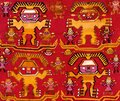Art: Difference between revisions
No edit summary |
(→Nazca) |
||
| (One intermediate revision by one other user not shown) | |||
| Line 1: | Line 1: | ||
Artwork depicting creatures similar to the Nazca mummies can be found worldwide. These creatures are portrayed with distinctive attributes such as three digits on their hands and feet, prominent circular eyes, triangular body shapes, and pointed, elf-like hats and footwear. The following examples illustrate the global occurrence of these tridactyl beings across diverse cultures and geographical locations. | |||
=== Peru === | === Peru === | ||
| Line 8: | Line 8: | ||
Peru2.jpg | Peru2.jpg | ||
Peru3.png | Peru3.png | ||
Buddies1.png | |||
Buddies2.png | |||
Buddies3.jpg | |||
</gallery> | </gallery> | ||
Latest revision as of 16:12, 20 April 2024
Artwork depicting creatures similar to the Nazca mummies can be found worldwide. These creatures are portrayed with distinctive attributes such as three digits on their hands and feet, prominent circular eyes, triangular body shapes, and pointed, elf-like hats and footwear. The following examples illustrate the global occurrence of these tridactyl beings across diverse cultures and geographical locations.





















